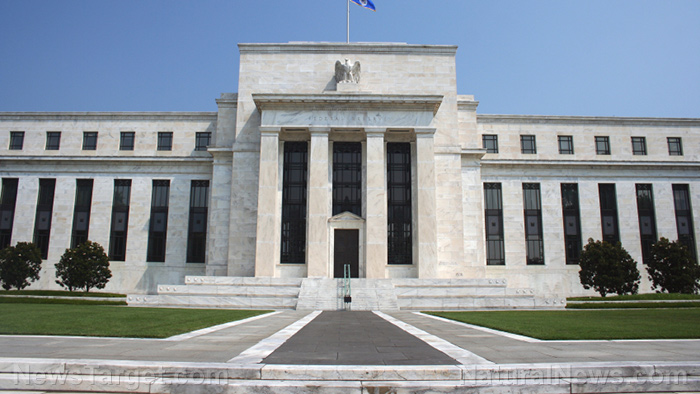High car loan rates are driving away prospective buyers
11/09/2022 / By Roy Green

Owning a car, whether brand-new or used, is getting harder for most Americans these days.
Inflation is spiking and auto loan interest rates are rising, hitting the highest level since 2019. With no signs of slowing down, the interest rates will soon breach the 14-year record highs. Prospective buyers, already having second thoughts due to the unstable fuel prices, will further hold back their decision to purchase or not.
Based on the latest data from car shopping website Edmunds, the average annual percentage rate on new-car loans was 6.3 percent in October – surpassing the April 2019 ceiling, according to Bloomberg. And there’s no limit in sight as the Federal Reserve raised interest rates by 75 basis points for the fourth straight time. This means the federal funds rate will have a new range of 3.75-4 percent, the highest level since 2007.
New car buyers, almost 13 percent of them, are shelling out $1,000 a month for their car payments. Those who opted for used cars are also feeling the pinch as 12 percent of them are paying $554 monthly. (Related: Inflation pushing many Americans to pay at least $1K monthly on vehicle loans.)
Hopefully, this won’t last long as the price of used cars in the U.S. recorded its biggest year-over-year decline since January 2009 halfway through October, dropping 10.4 percent overall.
“New-vehicle inventory might finally be improving, but the automotive industry is still on a long road to recovery because rising interest rates are creating a major barrier to entry for car shoppers,” said Jessica Caldwell, executive director of insights for Edmunds, in an email.
Still, annual vehicle sales, which plummeted to 8.9 million in April 2020, soared to 18.7 million in April 2021 – the highest yearly gain ever in the car industry. “Many consumers who have been sitting out of the market due to high prices and limited options will likely continue to do so over high-interest rates,” added Caldwell.
These high-interest rates, according to iSeeCars’s Car Affordability Index pulled down the affordability of new cars to 13.3 percent from August 2019 to August 2022, while the affordability of used cars plunged 26.7 percent during the same period.
Prices of new cars remain sky-high
Despite the automotive industry’s shaky status, partly brought about by supply chain issues, the prices of new cars remain sky-high. Edmunds’ data shows the average new-vehicle purchase last month was $40,438 – more than 27 percent above April 2019 prices of $31,914.
“The average price of a vehicle has risen dramatically. There are fewer, smaller, budget-friendly vehicles for shoppers to choose from,” said Caldwell. “And on top of that, consumers are paying more for everything else in their lives.”
The annual percentage rate for used cars is a prime example, as it is now pegged at 10.33 percent. But why the upward spiral?
It’s because, the Fed is trying to quash inflation by raising consumer borrowing costs for car loans, credit cards and mortgages. Simply put, “the Fed is slamming on the economy’s brakes by aggressively hiking while not trying to spark a recession.”
In doing so, however, the Fed triggered an affordability crisis instead, where average Americans can hardly afford to buy a car. Whether it’s brand new or secondhand no longer matters. Both have been priced out of reach by inflation.
Visit Inflation.news for more news related to soaring inflation rates in America and other parts of the world.
Watch the video below showing outrageous markup prices of some Broncos for sale.
This video is from the Prosciencetruth channel on Brighteon.com.
More related stories:
Used car prices are finally starting to drop, but many consumers still can’t afford payments.
Sources include:
Submit a correction >>
Tagged Under:
Bubble, car loan, car payments, Collapse, debt bomb, debt collapse, economic collapse, Fed, inflation, interest rates, market crash, money supply, mortgage, risk, used cars
This article may contain statements that reflect the opinion of the author
RECENT NEWS & ARTICLES
COPYRIGHT © 2018 MONEYSUPPLY.NEWS
All content posted on this site is protected under Free Speech. MoneySupply.news is not responsible for content written by contributing authors. The information on this site is provided for educational and entertainment purposes only. It is not intended as a substitute for professional advice of any kind. MoneySupply.news assumes no responsibility for the use or misuse of this material. All trademarks, registered trademarks and service marks mentioned on this site are the property of their respective owners.




















